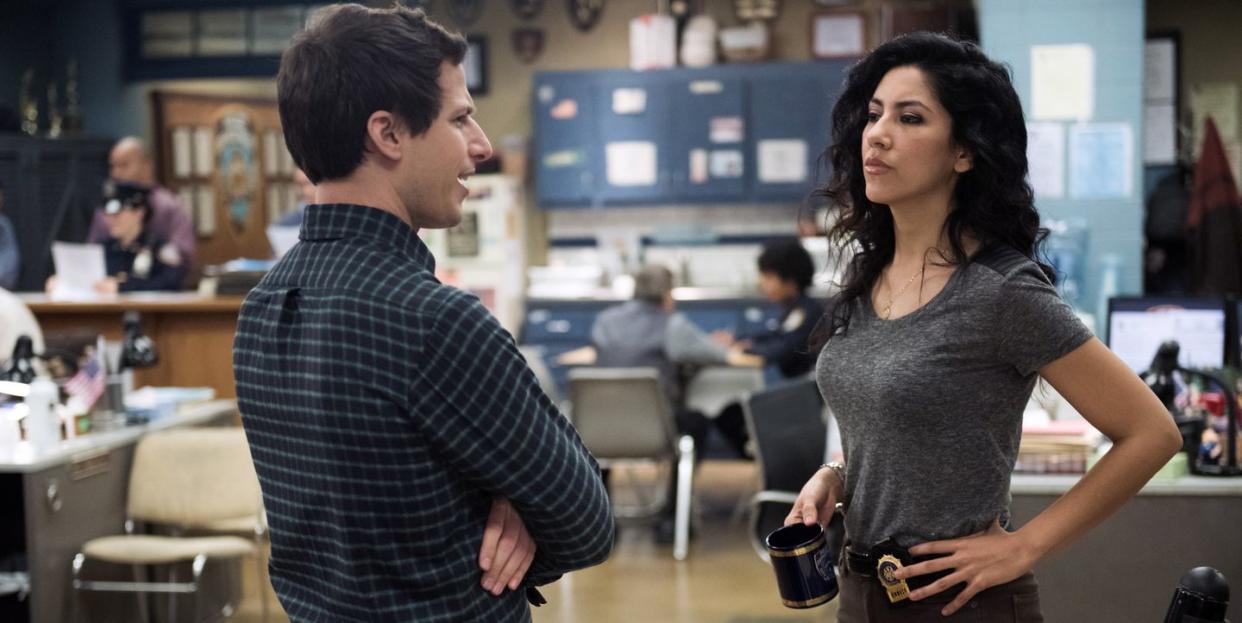Bisexual People Are Facing a Public Health Crisis. Experts Share Why Better Representation Could Help

Growing up without any stories or examples of what it meant to be bisexual, I had no models for what my life could look like and kept my sexuality hidden for years. Because I dated men, everyone assumed I was straight. But I felt incomplete.
“In a lot of ways, bi people are invisible in society,” says Brian A. Feinstein, Ph.D., an associate professor of psychology at the Rosalind Franklin University of Medicine and Science in North Chicago who studies sexual and gender minority health. “People make assumptions about another person’s sexual orientation based on who they’re in a relationship with, so bi people get erased in gay, lesbian, and heterosexual communities.”
When I came out as an adult, I often faced pushback. In queer spaces, I was pressured to “figure out” my sexuality as if I had to choose a team. Straight family members repeatedly asked how I could possibly be monogamous—even after I reminded them of how common infidelity is regardless of who you’re attracted to.
Bi+ people—meaning those of us who are bisexual, pansexual, or queer—often live between two worlds. “They don’t relate to or receive understanding from heterosexuals and are often not perceived as “queer enough” to fit in with the LGBTQ+ community,” says Monica Ghabrial, Ph.D., a postdoctoral fellow in the Department of Epidemiology and Biostatistics at Western University. When it comes to dating, many people believe bi+ women are actually straight and just trying to get attention, while bi+ men are often accused of being too afraid to come out as gay.
As a result of negative stereotypes, bi+ people are prone to being rejected or mistrusted by monosexual partners and can wind up feeling like an imposter or internalizing bad feelings and beliefs about themselves, says Dr. Ghabrial.
Although bi+ people account for the largest portion of the LGBTQ community, we’re less likely to be out compared to our gay and lesbian peers. In part, this is due to the double discrimination of being questioned and pushed away by people in both straight and queer spaces.
But these experiences aren’t just hurtful and isolating. They could also be linked to a number of negative health outcomes that disproportionately affect bi+ people.
The bisexual public health crisis
In early research studies, bi+ people were often clumped together under the LGBTQ umbrella. But recent studies have shown that bi+ people have worse health outcomes than gay, lesbian, and heterosexual people, says Dr. Feinstein.
For example, bi+ women and men are more likely to experience symptoms of anxiety and depression or say they’ve seriously considered suicide in the past compared to gay, lesbian, and straight people. We’re also more prone to abusing drugs and alcohol. Some studies suggest we might be more inclined to have risky sex which could, in turn, lead to higher rates of teen pregnancy and sexually-transmitted infections, too.
While there are many factors that contribute to these health disparities including lower access to quality healthcare and health insurance, researchers believe discrimination and stigma also play a role. When you feel invisible or rejected, stress builds up. Over time, that can take a serious toll on your health.
“Social support, family support, and community connection are some of the most important protective factors for minority groups—especially queer and trans people,” says Dr. Ghabrial. “Because of stigma, bisexual+ people have reduced access to these which in turn increases isolation, stress, and risk of poor health.”
In some ways, bi+ people are one of the most at-risk sexual minority groups. “This is a public health issue, and it needs to be addressed,” says Dr. Feinstein.
How bisexual representation can help
Along with healthcare reform, bi-friendly communities like amBi, and inclusive resources for teens such as Sex. Etc. and Scarleteen, media representation can help combat bisexual health disparities by making bi+ kids and adults feel seen and accepted.
“For people who don’t have a community, seeing people like themselves represented on TV, in movies, online, in any sort of way can provide some of that connection they’re otherwise missing and show them they’re not actually alone,” says Dr. Feinstein.
For Morgana McCabe Allan, seeing Jadzia Dax, an alien character on Star Trek: Deep Space Nine, re-encounter a once-masculine lover morphed into a feminine one, served as a “solitary lifeline” when so few bi+ stories were out there. “Watching it, I felt such a kinship and coming home,” she says, “knowing that I love people for who they are on the inside.”
Rochelle K., a bi/pansexual woman who grew up in a Black conservative Christian community, says she found comfort in the character Rosa Diaz from Brooklyn 99 because she had genuine relationships with men and women alike. “She proved someone can love both and that being bisexual isn’t about being any more sexually ravenous or less committed than heterosexual people,” she says.
There’s still a long way to go when it comes to bi+ representation. Bi people are often portrayed as hypersexualized or unfaithful, and storylines frequently center around a struggle with their sexual identity rather than more joyful or holistic portrayals, notes Dr. Feinstein.
Bi+ characters are also typically white women in relationships with cisgender men, adds Dr. Ghabrial, which leaves bi+ men, people of color, and women dating non-cisgender men with few models to reflect them. “Representation that normalizes racialized bisexuality and presents it in a positive and natural light could make a world of difference for many,” she says.
Hopefully, bi+ representation will soon be as diverse and complex as this community is in real life. In the meantime, I’m excited to discover more bisexual characters, celebrities, and creators as they come out.
You Might Also Like

